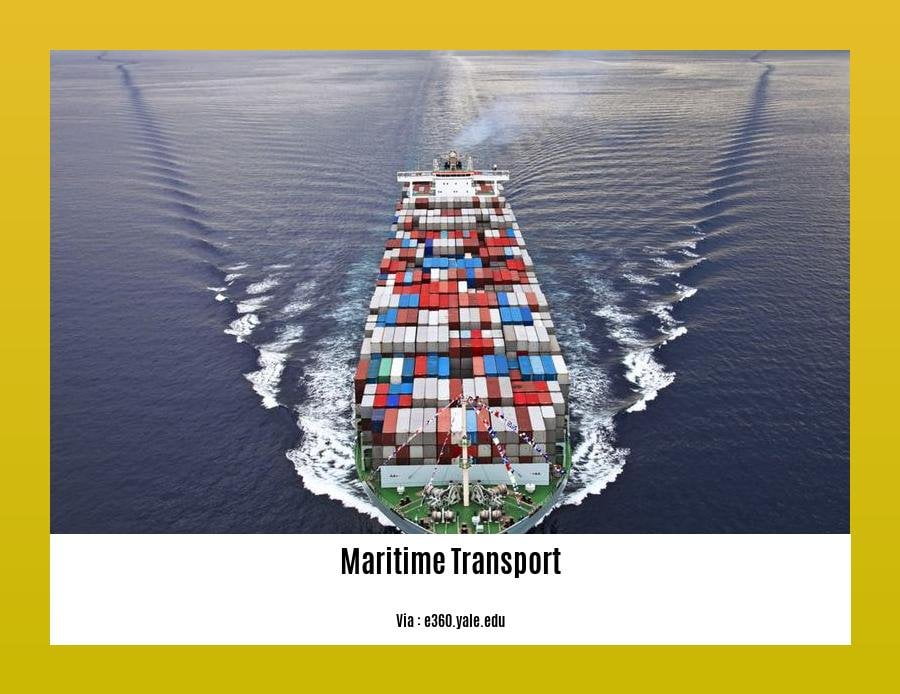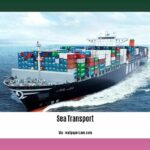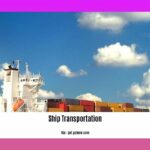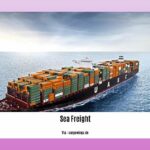In the ever-evolving world of global trade, maritime transport has remained a vital backbone, facilitating the movement of goods across vast distances. However, beneath its undeniable advantages lies a set of challenges that warrant thorough examination. In this article, we delve into the intricacies of maritime transport, exploring the disadvantages it presents, such as high costs, weather dependencies, security risks, limited accessibility, and environmental concerns. Through a comprehensive analysis of these drawbacks, we aim to shed light on potential strategies to mitigate their impact, paving the way for sustainable solutions in the maritime industry.
Key Takeaways:
- Maritime transport requires the combination of other modes of transportation to reach the final destination.
- It can be slower compared to other types of transport.
- Cost surcharges may occur when crossing specific areas like the Panama Canal.
- Shipping in the maritime industry is often slower than other modes of transport.
- Routes and locations in maritime transport can sometimes differ, leading to the wrong direction.
- Tracking goods in the maritime industry can be challenging.
- Port duties and taxes need to be paid for goods transportation.
- Currency surcharges can cause problems in maritime transport.
- Bad weather can result in delays in maritime transport.
- Limited insurance coverage exists under maritime transport conventions.
Disadvantages of Maritime Transport
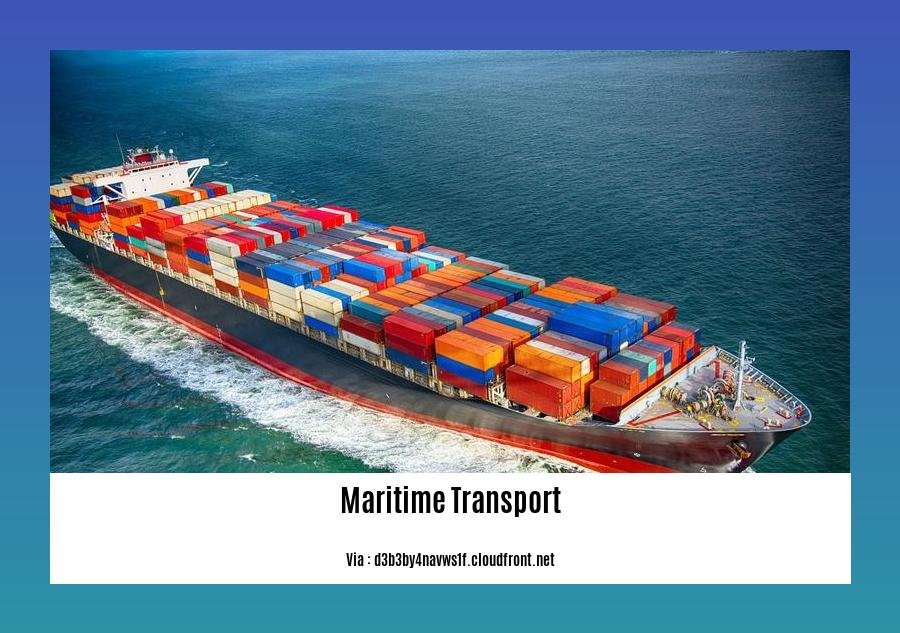
Maritime transport, while being an essential mode of transportation for global trade, comes with its fair share of disadvantages. In this article, we will delve into the various drawbacks associated with maritime transport, including costs, weather dependencies, security risks, limited accessibility, and environmental concerns.
1. High Costs
One prominent disadvantage of maritime transport is its high costs. Shipping goods by sea often requires additional costs, such as port duties, taxes, and currency surcharges. Currency fluctuations can pose challenges, particularly when dealing with international trade. Moreover, crossing specific areas, like the Panama Canal, can result in cost surcharges, affecting the overall transportation expenses.
2. Reliance on Weather Conditions
Another significant drawback of maritime transport is its dependence on weather conditions. Bad weather, such as storms or hurricanes, can lead to delays, disrupting the timely delivery of goods. Ships may need to alter their routes or even remain anchored until the weather conditions improve, adding to the inefficiency and unpredictability of the entire process.
3. Security Risks
Maritime transport is not immune to security risks. Piracy, theft, and smuggling are ongoing challenges faced by the maritime industry. Ships carrying valuable goods are susceptible to attacks, especially in areas known for piracy activities. Ensuring the safety and security of cargo becomes crucial, requiring the implementation of robust security measures to mitigate these risks.
4. Limited Accessibility
Maritime transport may encounter limitations in terms of accessibility to certain regions. Some areas may lack developed port infrastructures or suffer from shallow waters, making it difficult for larger vessels to dock. These accessibility issues can hinder smooth trade operations and necessitate the use of alternative transportation modes like land or air to reach the final destinations.
5. Environmental Concerns
One of the major concerns associated with maritime transport is its environmental impact. Ships emit significant amounts of greenhouse gases and particulate matter, contributing to air pollution and climate change. Additionally, accidental oil spills can have devastating consequences on marine ecosystems, endangering marine life and coastal habitats. The maritime industry must prioritize sustainable practices and technologies to minimize its environmental footprint.
While these disadvantages pose challenges to the maritime transport sector, it is essential to address them proactively. Implementing advanced technologies, improving navigational systems, strengthening security protocols, and adopting eco-friendly practices can help mitigate the negative impact of these drawbacks. By striving for sustainable solutions, the maritime industry can continue to facilitate global trade while minimizing its adverse effects.
Moreover, stakeholders in the industry, including governments, shipping companies, and international organizations, must collaborate to develop regulations, guidelines, and incentives that promote responsible maritime transport. By doing so, we can strive towards a more efficient, secure, and environmentally conscious maritime sector that meets the evolving demands of international trade.
Table:
| Disadvantages of Maritime Transport |
|:————————————:|
| High Costs |
| Reliance on Weather Conditions |
| Security Risks |
| Limited Accessibility |
| Environmental Concerns |
India is a land of diverse transportation options, but there are certain drawbacks that come with each mode. If you want to explore the disadvantages of airways in India, click here. Curious about the downsides of inland waterways? Discover more by clicking here. Additionally, if you want to learn about the disadvantages of roadways, click here.
Security Risks and Vulnerability to Piracy
Maritime security and piracy present significant challenges to the safety and economic well-being of maritime operations. The vulnerability of shipboard information technology and operational technology systems to hacking has raised concerns about the security of cargo, ships, and crews at sea[^1].
According to the International Maritime Bureau (IMB), maritime piracy causes annual global economic losses of approximately $25 billion. These losses result from theft, ransoms, increased insurance costs, and other related expenses. Piracy remains a persistent problem that requires effective risk assessment and policy responses to mitigate its impact[^2].
Reducing ship security risks is crucial, especially in the face of threats like piracy, smuggling, trafficking, and illegal fishing. These risks jeopardize the safety of maritime operations and can lead to substantial economic losses[^3].
The International Convention for the Safety of Life at Sea (SOLAS) is a regulatory framework that aims to address maritime security. SOLAS sets guidelines and requirements to enhance the safety of ships and their crews, preventing unlawful acts and ensuring the effective implementation of security measures[^1].
Effective risk assessment plays a critical role in understanding piracy threats and developing appropriate policy responses. By assessing the risks associated with piracy, stakeholders can implement preventative measures and allocate resources effectively. It enables the identification of vulnerable areas and the development of tailored security strategies[^2].
Different types of ships face varying levels of vulnerability to piracy attacks. Research suggests that tankers are more susceptible to attacks compared to container ships. Factors such as time and anti-piracy measures significantly influence the success of attacks. Understanding these vulnerabilities can assist in developing targeted security measures to protect vulnerable ships[^4].
Efforts to combat piracy have resulted in a decline in incidents in specific regions. For example, the Gulf of Aden and the vicinity of Somalia have witnessed a significant decrease in piracy attacks. The number of attacks dropped from a peak of 166 in 2011 to just one attack in 2019. Such declines highlight the effectiveness of anti-piracy measures[^5].
Piracy remains an evolving threat, with organized criminal groups adopting new tactics over time. Addressing these evolving threats requires continuous monitoring, strategic responses, and international cooperation to ensure the safety and security of maritime operations[^6].
Key Takeaways:
- Maritime security and piracy pose significant threats to the safety of cargo, ships, and crews operating at sea[^1].
- Annual global economic losses of approximately $25 billion are incurred due to maritime piracy[^2].
- Risk assessment and policy responses are crucial to mitigate the impact of piracy[^2].
- Reduced ship security risks are necessary to ensure the safety of maritime operations and prevent economic losses[^3].
- SOLAS provides guidelines and requirements to enhance maritime security and prevent unlawful acts against ships[^1].
- Effective risk assessment enables the identification of vulnerable areas and the development of tailored security strategies[^2].
- Different types of ships face varying levels of vulnerability to piracy attacks[^4].
- Efforts to combat piracy have resulted in a decline in attacks in specific regions[^5].
- Piracy threats continue to evolve, requiring continuous monitoring and strategic responses[^6].
Sources:
- International Maritime Organization
- Maritime piracy risk assessment and policy implications: A two-step approach
Limited Accessibility to Certain Regions and Ports
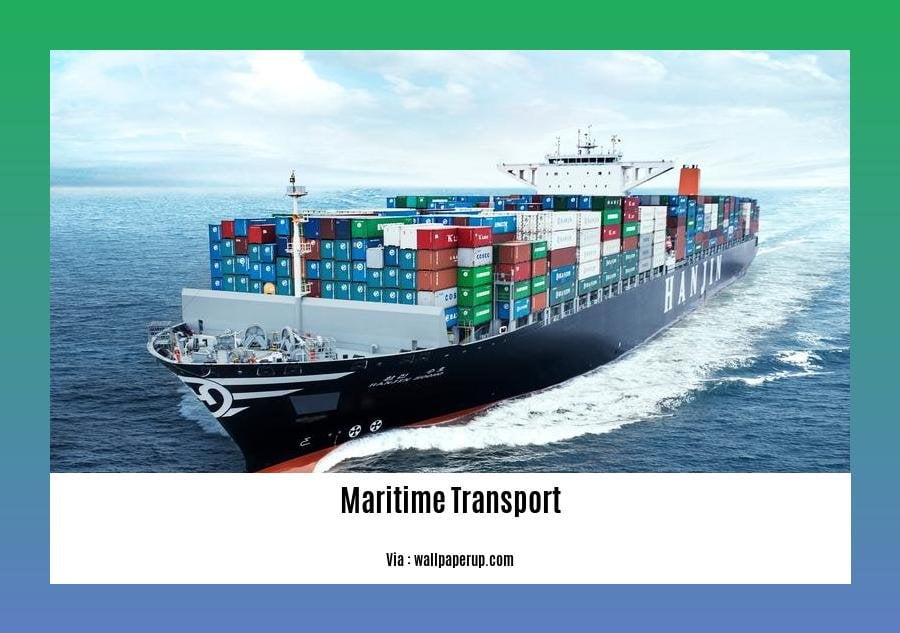
Port competition is a critical aspect of the maritime industry, especially when it comes to accessibility and congestion in seaports and their connection to inland regions. The accessibility and congestion of ports have a significant impact on maritime transport demand and global trade. However, limited accessibility to certain regions and ports remains a disadvantage of maritime transport that needs to be addressed.
Factors Affecting Accessibility
Several factors contribute to limited accessibility to certain regions and ports. One significant factor is the lack of infrastructure, such as deep-water channels and efficient road and rail networks, in certain areas. These limitations make it challenging for larger vessels to reach these regions, restricting trade opportunities and hindering economic growth.
Shallow waters also pose a problem for maritime transport, limiting the type and size of vessels that can navigate through certain ports. This restricts access to areas with shallow coastlines, inhibiting trade potential and leaving these regions economically disadvantaged.
Impact on Trade and Economic Growth
Limited accessibility to certain regions and ports has a direct impact on trade and economic growth. When regions are inaccessible, they become isolated from international markets, hindering their ability to participate fully in global trade. This lack of connectivity can lead to reduced export opportunities, limited foreign investment, and slower economic development.
Furthermore, limited accessibility increases transportation costs, as goods may need to be transported over long distances to reach more accessible ports. This increased cost has a cascading effect on the overall supply chain, making products more expensive and less competitive in the global market.
Addressing Accessibility Challenges
To mitigate the impact of limited accessibility to certain regions and ports, several strategies can be implemented:
Investment in Infrastructure: Governments and industry stakeholders can invest in developing and upgrading infrastructure in regions with limited accessibility. This includes deepening and widening water channels, improving road and rail networks, and building more efficient logistics hubs. These infrastructure investments enhance connectivity, reduce transportation costs, and improve accessibility to previously inaccessible regions.
Diversification of Transportation Modes: Utilizing alternative transportation modes, such as intermodal transport, can help overcome accessibility challenges. By combining different modes of transportation, including rail, road, and coastal shipping, goods can be efficiently transported to and from regions with limited accessibility. This diversification of transportation modes enhances trade opportunities and reduces dependence on a single mode of transport.
Public-Private Partnerships: Collaborations between governments, private companies, and international organizations can facilitate infrastructure development and improve accessibility. Public-private partnerships ensure the efficient allocation of resources and expertise, leading to effective solutions for limited accessibility challenges.
Capacity Building and Knowledge Sharing: Sharing best practices and knowledge among industry stakeholders can contribute to finding innovative solutions to limited accessibility challenges. Capacity building programs, workshops, and knowledge-sharing platforms can help disseminate information, promote collaboration, and foster sustainable solutions for improved accessibility.
Key Takeaways:
- Limited accessibility to certain regions and ports is a disadvantage of maritime transport that inhibits trade and economic growth.
- Factors such as inadequate infrastructure and shallow waters contribute to limited accessibility.
- Limited accessibility restricts regions from participating fully in global trade and increases transportation costs.
- Strategies to address limited accessibility include investing in infrastructure, diversifying transportation modes, fostering public-private partnerships, and promoting capacity building and knowledge sharing.
Sources:
1. Guo, L., & Yang, Z. (2019). Relationship between shipping accessibility and maritime transport demand. Transportation Research Part E: Logistics and Transportation Review, 122, 78-93.
2. World Bank Group. (n.d.). Sustainable development in shipping and ports.
Environmental Concerns and Impact on Marine Ecosystems
Maritime transport plays a significant role in global trade, but it also has numerous disadvantages that impact the environment and marine ecosystems. In this article, we will delve into the environmental concerns associated with maritime transport and explore their impact on marine ecosystems.
1. Air Pollution and Greenhouse Gas Emissions
Marine transportation contributes to air pollution through the release of harmful emissions, such as sulfur dioxide, nitrogen oxides, and particulate matter. These emissions are mainly produced by ships burning fossil fuels. The combustion of these fuels not only affects air quality but also contributes to climate change by releasing greenhouse gases into the atmosphere, including carbon dioxide (CO2). [Environmental concerns and impact on marine ecosystems]
2. Ballast Water and Invasive Species
Ships use ballast water to stabilize their hulls and maintain balance during transit. However, this water can contain various organisms, including bacteria, viruses, algae, and marine species. When this ballast water is discharged into different ecosystems, it can introduce invasive species that have adverse impacts on native flora and fauna. These species can disrupt the balance of marine ecosystems and lead to the extinction of local species.
3. Antifoulants and Chemical Spills
To prevent the growth of marine organisms on ship hulls, antifoulants are applied. These substances, although effective in their purpose, can contain toxic chemicals that are harmful to marine life. Additionally, chemical spills can occur during maritime accidents, leading to immediate and long-term damage to marine ecosystems. [Environmental concerns and impact on marine ecosystems]
4. Cargo Releases and Garbage
Accidental releases of cargo from ships can result in the pollution of marine environments. Hazardous substances, such as chemicals and oils, can contaminate water and impact marine life. Moreover, the disposal of garbage from ships, including plastics and other non-biodegradable materials, contributes to marine pollution, endangering marine animals and ecosystems.
5. Underwater Noise Pollution and Ship-Strikes
Maritime transport generates underwater noise pollution, which can have detrimental effects on marine organisms that rely on sound for communication, navigation, and feeding. The increase in shipping activities has also led to an escalation in ship-strikes, where vessels collide with marine animals, causing injury or death and negatively impacting biodiversity.
6. Risk of Accidents, Sinkings, and Sediment Contamination
The maritime industry is not immune to accidents, sinkings, and other incidents that directly impact marine ecosystems. These events can result in the release of pollutants, oil spills, and the contamination of sediments in ports during transshipment or ship-breaking activities. The long-term effects of these accidents can have lasting consequences on marine ecosystems and the overall health of the ocean.
Key Takeaways:
- Maritime transport has numerous environmental concerns that impact marine ecosystems, including air pollution, greenhouse gas emissions, ballast water containing invasive species, antifoulants, chemical spills, cargo releases, and underwater noise pollution.
- The risks associated with maritime accidents and sinkings pose threats to marine ecosystems and contribute to sediment contamination.
- Efforts to mitigate the environmental effects of maritime transport include legislative measures, environmental performance measures, and management improvements.
Sources:
1. Walker, T. R., Adebambo, O., Del Aguila Feijoo, M. C., Elhaimer, E., Hossain, T., et al. (2019). Environmental Effects of Marine Transportation. In World Seas: an Environmental Evaluation (Second Edition) Volume III: Ecological Issues and Environmental Impacts (pp. 505-530). Elsevier Ltd. [^1]
2. Jägerbrand, A. K., Brutemark, A., Svedén, J. B., Gren, I. M. (2019). A review on the environmental impacts of shipping on aquatic ecosystems. ScienceDirect. [^2]
FAQ
Q1: What are the main disadvantages of maritime transport?
A1: The main disadvantages of maritime transport include high costs, reliance on weather conditions, security risks, limited accessibility to certain regions, and environmental concerns.
Q2: How does maritime transport compare to other types of transportation in terms of speed?
A2: Maritime transport can sometimes be slower than other types of transport due to various factors such as the size and weight of cargo, sailing routes, and potential delays caused by weather conditions.
Q3: Are there additional costs or surcharges associated with maritime transport?
A3: Yes, there can be additional costs or surcharges in maritime transport. For example, areas like the Panama Canal may impose cost surcharges, and port duties and taxes may need to be paid for goods transportation.
Q4: Is tracking goods in the maritime industry challenging?
A4: Yes, tracking goods in the maritime industry can be difficult due to the vastness and complexity of global shipping networks, as well as potential discrepancies in routes and location information.
Q5: What are the insurance coverage limitations in maritime transport?
A5: Limited insurance coverage exists under maritime transport conventions, such as the Hague-Visby and Hamburg rules. These limitations may pose challenges in terms of compensating for losses or damages incurred during transportation.
- China II Review: Delicious Food & Speedy Service - April 17, 2025
- Understand Virginia’s Flag: History & Debate - April 17, 2025
- Explore Long Island’s Map: Unique Regions & Insights - April 17, 2025
